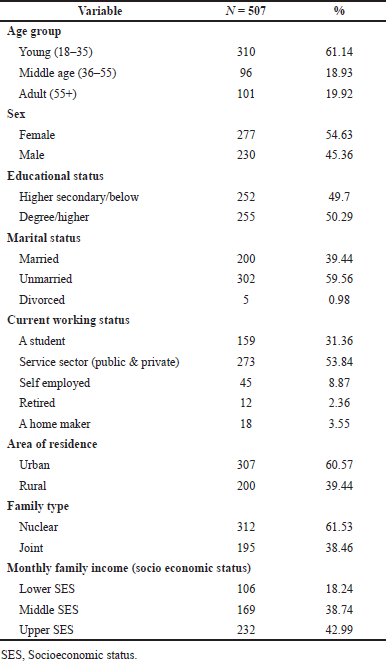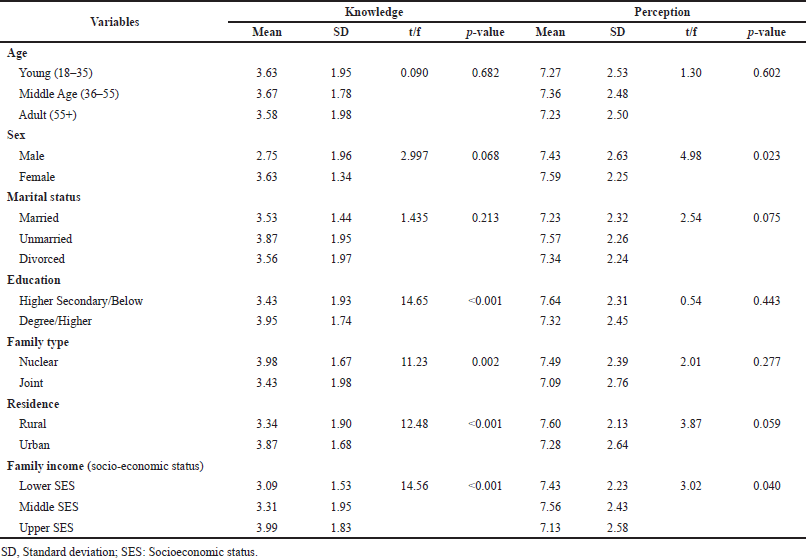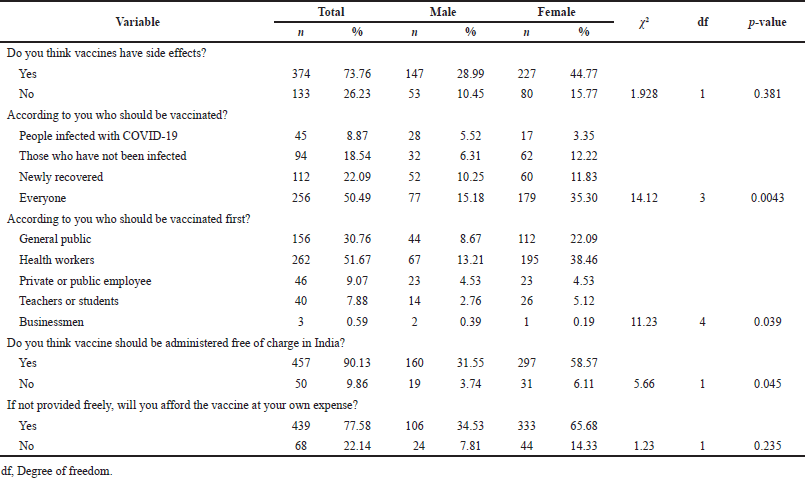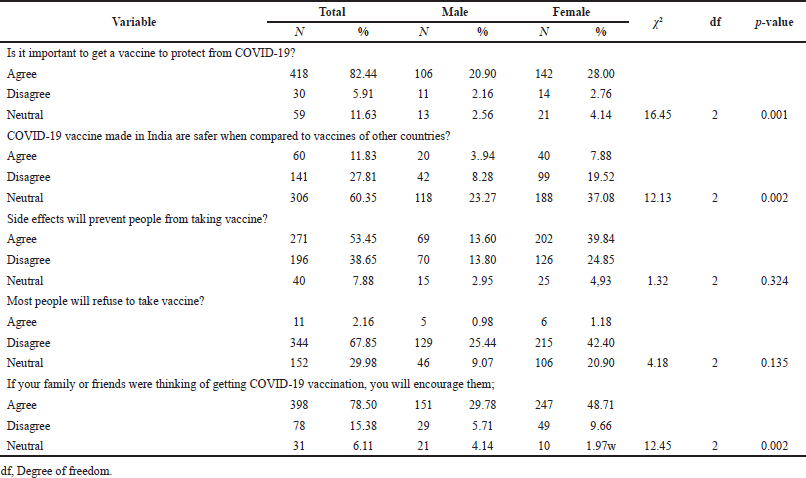INTRODUCTION
COVID-19 infection is due to SARS-CoV-2, a virus initially reported in Wuhan, China (Hui et al., 2020). The World Health Organization (WHO) estimated that the pandemic resulted in 5.8 million deaths globally, with 0.51 million deaths in India alone (as of 18th February 2022) (WHO, 2020). Recent reports show that morbidity and mortality rates are increasing daily. The WHO and the Ministry of Health and Family Welfare (MoHFW) recommended multiple preventive measures to fight the pandemic. These include maintaining a safe distance, wearing a mask, and hand hygiene (Ahmad et al., 2020; MoHFW, 2020). Following these recommendations contributed to a greater extent of inhibiting the spread of infection. The pharmaceutical industry struggled initially to release vaccines to boost individual and herd immunity. Initially, drugs were the only effective pharmacologic measures to help control this detrimental pandemic; thereafter, multiple vaccines with different mechanisms of action were available and some were approved for emergency use to fight COVID-19 infection (Shervani et al., 2020). During the initial stages in India, three COVID-19 vaccines—Covishield, Covaxin, and Sputnik V—had received regulatory clearance. Covishield and Covaxin are two national vaccines. Bharat Biotech manufactures Covaxin, which is India’s first native COVID-19 vaccine. Covishield is a vaccine designed by Oxford–AstraZeneca and produced locally by the Serum Institute of India. Sputnik V is developed by Gamaleya Institute, Moscow, in collaboration with Dr Reddy’s Laboratory Ltd. and imported to India. Apart from that, Corbevax, Johnson & Johnson, Moderna, Novavax, Sputnik Light, and Zydus Cadila are the other vaccines approved in India. The Indian government has secured the vaccine doses and provided them to state governments free of cost. The vaccines were offered to the public at an affordable price or free of charge by pre-booking vaccinations on CoWIN’s website (MoHFW, 2020; Kumar et al., 2021). On 16 January 2021, India began mass immunization. Phase I of the National COVID-19 vaccination program focused on the front line and healthcare workers. Phase II started in March 2021 and focused on vulnerable populations aged 45 years and above. Phase III of the vaccination program started on 1 May which focused on the age group of 18–45, followed by phase IV from 3 January for the age group of 15–18 (Bagcchi et al., 2021). The eligible age for vaccination included young adults starting from the age of 18 in May 2021 except for pregnant women, a person with symptoms of COVID-19 infection, and those with a history of allergic or anaphylactic reactions to the previous dose of corona vaccine (Foy et al., 2021; Kumar et al., 2021).
India faced a lethal second wave of coronavirus with the Delta variant of SARS-CoV-2 and is currently facing the third wave (Mandal et al., 2021; Pal et al., 2021; Ranjan et al., 2021). The impact of the third wave will largely depend on vaccination coverage. Since the newer strain “Omicron” possesses many mutations, as well as an increased rate of disease transmission, it is critical to accelerate vaccination and consider the necessity for a booster dose. So, the Indian government is responding by accelerating the pace of immunization.
Even though India has been following a dynamic vaccine strategy based on vaccine availability, liberalization of vaccine price, and amplifying vaccine coverage, 56.5% of the population have received two doses, and 70.7% of the population have got at least a single vaccine dose (data as of 19 February 2022) (Google News, 2021). Since 1 May 2021, the momentum of the vaccination scheme has declined due to vaccine shortage or vaccine refusal, or hesitancy, but is now slowly gaining its pace. The lack of awareness and complacency of the public toward the vaccine is jeopardizing mass immunization (Dror et al., 2020; Sharun et al., 2020; Surapaneni et al., 2021; Wouters et al., 2021).
To further accelerate the rate of vaccination, it is necessary to conduct cross-sectional questionnaire-based studies among the public to shed some light on their attitudes, knowledge, personal beliefs toward vaccines. Since the use of one’s intellect or senses to grasp or understand one’s surroundings (perception) influences one’s real feelings or thoughts regarding vaccines (attitude), here, we study the public knowledge, perception, and belief that influence vaccine hesitancy. These shreds of evidence may be helpful to put a brake on false information and deliver the right information to people.
MATERIALS AND METHODS
This is a questionnaire-based cross-sectional study conducted between 21 August and September of 2021 to assess the knowledge, attitude, and perceptions (KAP) of the general public on the COVID-19 vaccine.
Ethical clearance
Ethical clearance was obtained from Ethical Review Committee Board, Rajendra Memorial Research Institute of Medical Sciences, Patna, Bihar, EC number: RMRI/EC/19/2021. Participants gave their informed consent through social media platforms.
Study population
This research enlisted subjects relying on the inclusion and exclusion criteria.
Those individuals who are Indian and older than 18 years of age were included in the survey. Those individuals below 18 years and who submitted incomplete responses were excluded. The questionnaire was distributed widely to the public via social media platforms using the attributable Google Forms link.
Measures
Data were collected using a questionnaire that included informed consent and four separate sections (sociodemographic, knowledge, attitudes, and perceptions).
Sociodemographic information
Questions on sociodemographic details were assessed which included age, marital status (married/unmarried), sex (male/female), family type (nuclear/joint or extended family), educational status of the respondents, monthly household income [low socioeconomic status (SES) = income less than 15,000; middle SES = income between 15,000 and 30,000; and upper SES = income of more than 30,000], and present location of the respondent (urban/rural).
Knowledge, attitudes, and perceptions
Respondents were asked five questions each (a total of 15 predetermined questions) to test their KAP. Each question in the study was derived from prevalidated questions and group discussions.
The knowledge component consisted of five questions with three possible answers: “Yes,” “No,” and “Not Sure” (e.g., Do you know how effective the vaccine is?). Yes comments were labeled as 1, while no/do not know responses were labeled as 0. The cumulative mark, which ranged from 0 to 5, was calculated by the summation of five scores, with an upper score (≥2.5) signifying a higher level of understanding of COVID-19 vaccines. In addition, a question regarding the most trusted source of information regarding COVID-19 vaccines (with some responses like mass media, social media, healthcare professionals, and government-sponsored healthcare initiatives) was also asked.
The attitude section had five questions (e.g., Do you assume vaccines have side effects?) and the answers were recorded. No scoring was done in the attitude section. In the perception section, five items, such as “agree/disagree/neutral” questions, for evaluating the participants’ views of the COVID-19 vaccines (e.g., Is a COVID-19 vaccine expected to defend against COVID-19 infection?) were included. Here, the overall score was computed by adding the scores obtained of the five components, varies from 0 to 10, with a higher score (≥5) reflecting a more positive view on the COVID-19 vaccine, and the response to each item was expressed on a 3-point system (i.e., 0 = Disagree, 1 = Neutral, and 2 = Agree).
Statistical analysis
SPSS (version 28.0) and Microsoft Office excel were used to interpret the results. Sorting and coding the data sets for statistics were accomplished utilizing Microsoft Office Excel. The descriptive and inferential statistical tool was used for the analysis of the information. The data was used to perform a Chi-square test and multiple regression analysis.
Also, t-test and ANOVA tests were conducted to examine if there was an association between knowledge and perception levels and demographic variables. Multivariate regression analysis was employed to find the factors that varied substantially in terms of knowledge and perception. At the 95% confidence interval, all the statistical tools with a p-value less than 0.005 were considered significant.
RESULTS
Demographic details of the participants
A total of 507 people took part in the survey. Among them, 54.63% were female and 45.63% were male. More than half of the surveyed subjects were in the age group of 18–35 years (61.14%), with a mean age of 32.21 ± 15.16. Among the participants, one-third of them were students (31.36%); the other half include working [service sector (public and private) = 53.84%, self-employed = 8.87%] and not working (retired = 2.36%, homemaker = 3.35%) respondents (Table 1).
 | Table 1. Sociodemographic details of participants. [Click here to view] |
Majority of them were unmarried (59.56%) and had a degree or higher level of education (50.29%). Most were from urban areas (60.57%), with upper socioeconomic status (42.99%) and were members of nuclear families (61.53%).
Knowledge of COVID-19 vaccine
The effectiveness of the COVID-19 vaccine was acknowledged by half of the community (50.16%) and they believed that overuse of the vaccine is dangerous (57.98%). Among the participants, 82.24% had taken the COVID-19 vaccine and 17.75% did not take any dose of the COVID-19 vaccine. The most trusted source of information on vaccines was the government healthcare programs, followed by healthcare professionals, mainstream news media like TV and radio, and social media platforms (Fig. 1).
On comparison of knowledge among respondents regarding the effect of the COVID-19 vaccines in autoimmune diseases, a significant difference was seen among females as they believed that vaccination would increase autoimmune diseases, with a p-value = 0.002 (Table 2).
Participants with a basic degree or higher education, living in nuclear families, having upper socioeconomic status, and residing in urban areas showed a significantly high mean score for knowledge (3.34 ± 1.95 out of 5). In bivariate analysis, variables of the study population, like living in the nuclear family, having a degree or higher education, and having upper socioeconomic status, from urban areas showed statistical significance and a significantly higher mean knowledge score (Table 3). So, these variables were used to adjust multiple regressions (Table 4).
Attitude toward COVID-19 vaccine
Over half of the participants thought that the COVID-19 vaccination was good and had a positive outlook and attitude toward the vaccine. Approximately 50.49% of the participants strongly believed that everyone should get vaccinated. This approach appeared to be substantially more prevalent among females than among males (35.30% vs. 15.18%, p = 0. 0043). When comparing the attitude of the respondents with the sex difference, significant p-values were obtained. 35.30% of the participants believed that everyone should be vaccinated (p-value = 0.004) (Table 5).
 | Figure 1. The most trusted information resources of vaccine among respondents. [Click here to view] |
About half of the participants (51.67%) believed that healthcare professionals should be immunized first, which was significantly more in females than males (F = 35.30%; M = 15.18%; p = 0.039). However, 7.88% and 9.07% of the participants showed their interest in teachers or students and private or public employees, respectively, getting vaccinated first (Fig. 2).
Almost 90.13% wanted vaccines to continue to be free of cost in India, with females having a substantially greater percentage than males (F = 58.57%; M = 31.55%; p = 0.045). When respondents were asked about their willingness to pay for vaccines, 77.58% agreed to procure vaccines even at their own expense. 71% of the participants were worried about the COVID-19 vaccine’s adverse effects.
Perception toward COVID-19 vaccine
82.44% of the participants agreed that it is important to get the COVID-19 vaccine, while 11.63% showed neutral behavior. Most of the participants were neutral (60.35%) when they were asked about the safety of vaccines provided by India compared to vaccines of other countries. On comparison of the perception of the respondents with the sex difference, significant p-values were obtained. The perception was significantly higher in females regarding the protection provided by the COVID-19 vaccine, with a p-value = 0.001, and the safety of the COVID-19 vaccine formulated in India compared to the vaccines of other countries, with a p-value = 0.002 (Table 6).
In addition, about 67.85% disagreed that most of the population will refuse to receive vaccines, and half of the participants (53.45%) thought that the adverse effects of vaccines will deter people from getting vaccines. However, most of the respondents (78.50%) would encourage their family or friends to get vaccinated.
Factors predicting the level of perception were identified by bivariate analysis and a significant variation of perception scores was observed across residents (urban or rural) and genders (Table 5). The mean score of the five questions regarding the perception of the respondents toward the COVID-19 vaccine was 7.36 ± 2.48, suggesting an overall positive perception toward the vaccine.
Multiple regression score was adjusted using the variables which were detected to be statistically significant in bivariate analysis and showed that the female gender and living in a metropolitan area were closely linked with a favorable attitude toward the COVID-19 vaccine (Table 6).
DISCUSSION
In India, the nine COVID-19 vaccines approved to date are expected to halt the spread and the devastating socioeconomic and public health impact of COVID-19 infection. Despite the Indian government’s commitment and the availability of required doses free of charge, vaccine hesitancy is still hindering the full participation of the public. As a result, the pandemic is expected to yield additional morbidity and mortality. Through adequate understanding of people’s awareness, beliefs, and perspectives of the COVID-19 vaccine, we can identify the hurdles in vaccination programs. Hence, a questionnaire-based cross-sectional study investigated the KAP of people toward COVID-19 vaccines in India. In this study, approximately equal numbers of both genders were engaged, with a total of 507 participants.
 | Table 2. Distribution of each knowledge item. [Click here to view] |
The results showed that these sociodemographic factors have a role in affecting an individual’s willingness to get vaccinated or not. The demographic findings showed that there was more participation of students within the age range of 18–35 years, and they were more knowledgeable than adults (55 years or above) regarding the COVID-19 vaccine There was a significant association of knowledge with a monthly income of the respondent’s family, education, family type, and residence.
 | Table 3. Group difference analysis (bivariate) with knowledge and perception scores. [Click here to view] |
 | Table 4. Multivariate regression analysis predicting knowledge and perception towards COVID-19 vaccine. [Click here to view] |
 | Table 5. Distribution of each attitudes item. [Click here to view] |
 | Figure 2. Gender-wise perception on vaccination. [Click here to view] |
As the hesitant mind can tend toward acceptance if present with the right information, it is critical to spread well-defined information by educating the people through different information resources. This helps to improve their knowledge about vaccine efficacy and safety. Also, the government should put efforts to reach out and educate the uneducated people on the importance of vaccination and build trust toward vaccines in them. As in this study, we found that university or higher education participants had more knowledge regarding vaccines than those below the college level.
The negative contributions of different anti-vaccination campaigns contributed to the distrust of people toward the vaccines. The mass media has a critical role in distributing information, influencing public opinion, and reducing vaccination rates. It also has the potential to provide equitable access to healthcare, eliminate prejudice, and reduce societal stigma (Anwar et al., 2020). So, when we asked about the most trusted source of information, government healthcare programs and healthcare professionals had a high percentage as the most promising and trusted information resources (Fig. 1). Hence, it is necessary to disseminate precise and accurate facts and instructions through these media.
However, this survey’s finding highlights the optimistic attitude and perception of the majority of participants toward the COVID-19 vaccine. Even though half of the study participants were uncertain of the safety of Indian vaccines over vaccines of other countries, the other half trusted the effectiveness of the COVID-19 vaccine. Over 50% of the participants opted to get vaccinated for COVID-19 and this conclusion is consistent with the results of Freeman et al.’s (2020) study carried out on the UK population regarding vaccine hesitancy and found out that the majority (71.7%) of the population were ready to get vaccinated. Our results disclose that the majority of individuals were sure about the protection provided by COVID-19 vaccines against coronavirus, and they were also ready to encourage others to get vaccinated, and more than half of the respondents were bothered about the side effects of vaccines. This is compatible with the findings from Pogue et al.’s (2020) study carried out among the US population. This study reported that about 68% of the participants in the USA were concerned about the adverse effects COVID-19 vaccine (Pogue et al., 2020). The results of the present study showed that if the government would not offer the COVID-19 vaccination for free, the bulk of citizens were willing to spend for it. These findings are consistent with El-Elimat et al.’s (2021) findings. In their study, most of the individuals in Jordan were ready to acquire the vaccine with their own money, if available (El-Elimat et al., 2021).
 | Table 6. Distribution of each perception item. [Click here to view] |
In the present study, females were more aware of the COVID-19 vaccinations, with improved attitudes and responses to it, which is incompatible with the findings from the study of Lazarus et al. (2021) on US people; females in the United States expressed a more positive view about the COVID-19 vaccine than males (Lazarus et al., 2021). But this finding is contraindicated with the discovery of Fisher et al. (2020), who showed that US females have more vaccine hesitancy than males.
LIMITATIONS
In our survey, we got random samples with great variability among gender, age, and area of residence. Since this is an online questionnaire-based survey, this limits the involvement of marginalized people, like rural and illiterate, without having access to online and internet health information resources. Elderly people were less in this study; hence, this study could be more biased toward younger people and lead to selection bias. Besides, this study may be susceptible to report bias and recall bias. Another limitation is that we have not gathered evidence concerning the reasons for hesitancy, acceptance, and unwillingness to get vaccinated.
CONCLUSION
The crisis that COVID-19 brings in the life of common people is beyond explanation. In the present circumstances, the only way to stop the exponential growth in the affected people is through the COVID-19 vaccine. This cross-sectional study among the public sheds some light on their attitudes, knowledge, and personal beliefs toward vaccines. The information obtained from the study can be used to formulate necessary interventions to deliver accurate information among the common people to reduce the vaccine hesitancy among them and to encourage them to acquire the vaccine.
ACKNOWLEDGMENT
The authors of this study are thankful to all the study participants who spent their time to fill in the questionnaire. The authors are thankful to the Director, NIPER, Hajipur, and the Department of Pharmaceuticals, Ministry of Chemicals and Fertilizers, Government of India, for their consistent support to the department. Furthermore, the authors are also indebted to NIPER, Hajipur Authority, for their kindest help in this study.
AUTHOR CONTRIBUTIONS
All authors made substantial contributions to conception and design, acquisition of data, or analysis and interpretation of data; took part in drafting the article or revising it critically for important intellectual content; agreed to submit to the current journal; gave final approval of the version to be published; and agree to be accountable for all aspects of the work. All the authors are eligible to be an author as per the international committee of medical journal editors (ICMJE) requirements/guidelines.
FUNDING
There is no funding to report.
CONFLICTS OF INTEREST
The authors report no financial or any other conflicts of interest in this work.
ETHICAL APPROVALS
Ethical Review Committee Board, Rajendra Memorial Research Institute of Medical Sciences, Patna, Bihar, EC number: RMRI/EC/19/2021. Participants gave their informed consent through social media platforms.
DATA AVAILABILITY
All data generated and analyzed are included within this research article.
PUBLISHER’S NOTE
This journal remains neutral with regard to jurisdictional claims in published institutional affiliation.
REFERENCES
Ahmad S. A review of COVID-19 (coronavirus disease-2019) diagnosis, treatments and prevention. Eurasian J Med Oncol, 2020; 4(2):116–25.
Anwar A, Malik M, Raees V, Anwar A. Role of mass media and public health communications in the COVID-19 pandemic. Cureus. 2020; 12(9):e10453.
Bagcchi S. The world’s largest COVID-19 vaccination campaign. Lancet Infect Dis, 2021;21(3):323.
Dror AA, Eisenbach N, Taiber S, Morozov NG, Mizrachi M, Zigron A, Srouji S, Sela E. Vaccine hesitancy: the next challenge in the fight against COVID-19. Eur J Epidemiol, 2020;35(8):775–9.
El-Elimat T, AbuAlSamen MM, Almomani BA, Al-Sawalha NA, Alali FQ. Acceptance and attitudes toward COVID-19 vaccines: a cross-sectional study from Jordan. PLoS One, 2021;16(4):e0250555.
Fisher KA, Bloomstone SJ, Walder J, Crawford S, Fouayzi H, Mazor KM. Attitudes toward a potential SARS-CoV-2 vaccine. Ann Intern Med, 2020;173(12):964–73.
Foy BH, Wahl B, Mehta K, Shet A, Menon GI, Britto C. Comparing COVID-19 vaccine allocation strategies in India: a mathematical modelling study. Int J Infect Dis, 2021; 103:431–8.
Freeman D, Loe BS, Chadwick A, Vaccari C, Waite F, Rosebrock L, Jenner L, Petit A, Lewandowsky S, Vanderslott S, Innocenti S, Larkin M, Giubilini A, Yu LM, McShane H, Pollard AJ, Lambe S . COVID-19 vaccine hesitancy in the UK: the Oxford coronavirus explanations, attitudes, and narratives survey (Oceans) II. Psychol Med, 2020; 1–15.
Google News, 2021. Available via https://news.google.com/covid19/map?hl=en (Accessed 19 February 2022).
Hui DS, Azhar EI, Madani TA, Ntoumi F, Kock R, Dar O, Ippolito G, Mchugh TD, Memish ZA, Drosten C, Zumla A. The continuing 2019-nCoV epidemic threat of novel coronaviruses to global health — the latest 2019 novel coronavirus outbreak in Wuhan, China. Int J Infect Dis, 2020;91:264–6.
Kumar VM, Pandi-Perumal SR, Trakht I, Thyagarajan SP. Strategy for COVID-19 vaccination in India: the country with the second highest population and number of cases. NPJ Vaccines, 2021;6(1):60.
Lazarus J v., Ratzan SC, Palayew A, Gostin LO, Larson HJ, Rabin K, Kimball S, El-Mohandes A. A global survey of potential acceptance of a COVID-19 vaccine. Nat Med, 2021; 27(2):225–8.
Mandal S, Arinaminpathy N, Bhargava B, Panda S. Plausibility of a third wave of COVID-19 in India: a mathematical modelling based analysis. Indian J Med Res, 2021; 153(5):522.
Ministry of Health and Family Welfare, Government of India. COVID-19 vaccines operational guidelines. Updated, 2020. Available via https://www.mohfw.gov.in/pdf/COVID19VaccineOG111Chapter16.pdf (Accessed 19 February 2022).
Pal R, Yadav U. Resurgence of COVID-19 in India: time for introspection. Postgrad Med J, 2021; postgradmedj-2021-140410.
Pogue K, Jensen JL, Stancil CK, Ferguson DG, Hughes SJ, Mello EJ, Burgess R, Berges BK, Quaye A, Poole BD. Influences on attitudes regarding potential COVID-19 vaccination in the United States. Vaccines, 2020; 8(4):582.
Ranjan R, Sharma A, Verma MK. Characterization of the second wave of COVID-19 in India. medRxiv [Internet]. 2021 Jan 1;2021.04.17.21255665. Available via http://medrxiv.org/content/early/2021/05/02/2021.04.17.21255665.abstract
Sharun K; FRCK; HCV; JB; TR; DK. Covid-19 vaccine acceptance: Beliefs and barriers associated with vaccination among the general population in india. J Exp Biol Agric Sci, 2020; 8(Special issue 1).
Shervani Z, Khan I, Khan T, Qazi UY. COVID-19 vaccine. Adv Infect Dis, 2020; 10(03):195–210.
Surapaneni KM, Kaur M, Kaur R, Grover A, Joshi A. The impact of COVID-19 Vaccine Communication, Acceptance, and Practices (CO-VIN-CAP) on vaccine hesitancy in an Indian setting: protocol for a cross-sectional study. JMIR Res Protocols, 2021; 10(6):e29733.
World Health Organization. WHO coronavirus disease (COVID-19) dashboard. World Health Organization, Geneva, Switzerland, 2020. Available: https://covid19.who.int/ (Accessed 18 February 2022).
Wouters OJ, Shadlen KC, Salcher-Konrad M, Pollard AJ, Larson HJ, Teerawattananon Y, Jit M. Challenges in ensuring global access to COVID-19 vaccines: production, affordability, allocation, and deployment. Lancet, 2021; 397(10278):1023–34.